Burbn to Instagram: The ReadWriteWeb Mobile Summit 2010
We hold our second Silicon Valley unconference, this time about the mobile internet. One of our presenters shows off their HTML5 website, but shortly after pivots to an app called Instagram.
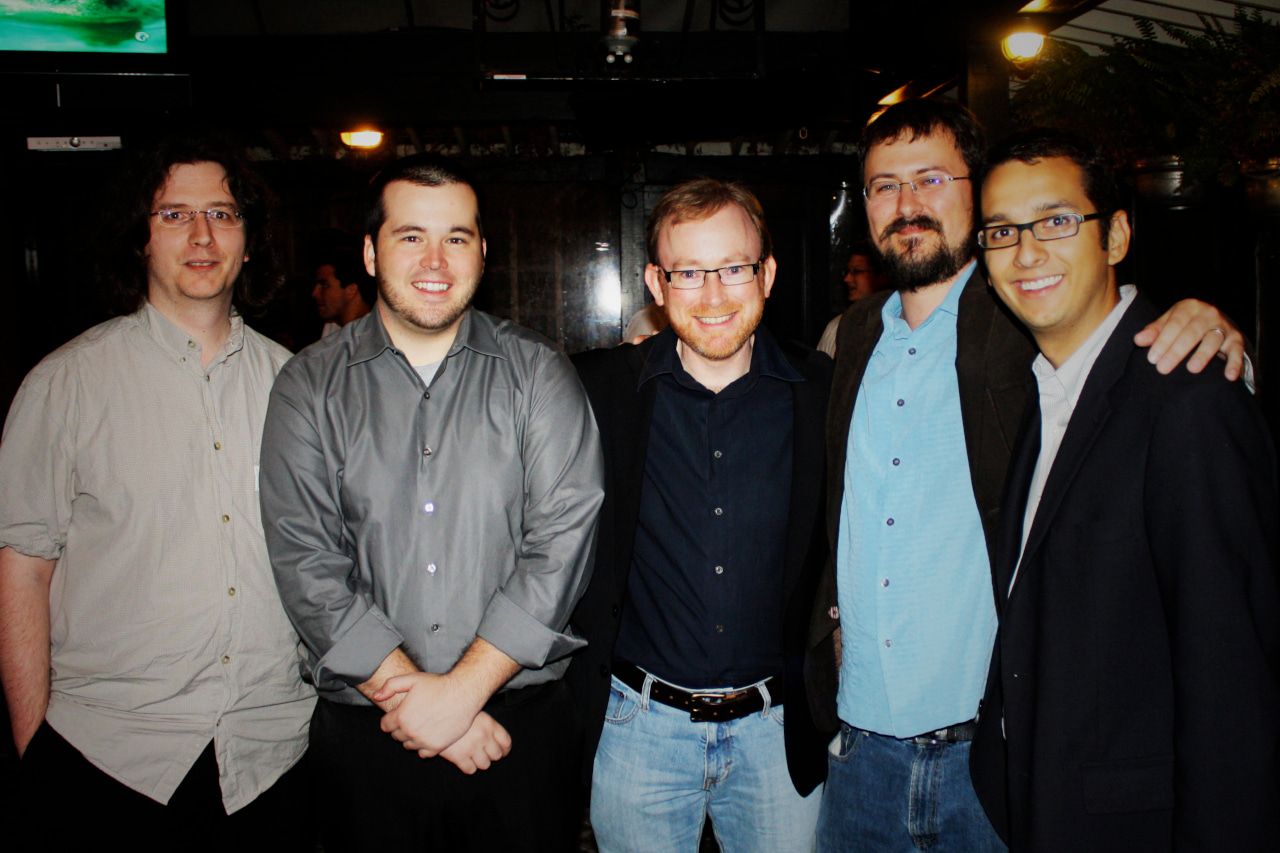
The ReadWriteWeb Mobile Summit was held on Friday, May 7, once more at the beautiful Computer History Museum in Mountain View. I would be giving the keynote presentation for the event and had built a presentation around five key mobile trends for 2010, based on a three-part series of posts I’d written in April. I even used RWW’s own iPhone app—admittedly, a very basic one that we’d commissioned from an independent developer and launched in January—and the mobile version of our website (m.readwriteweb.com) to demonstrate some of these trends.
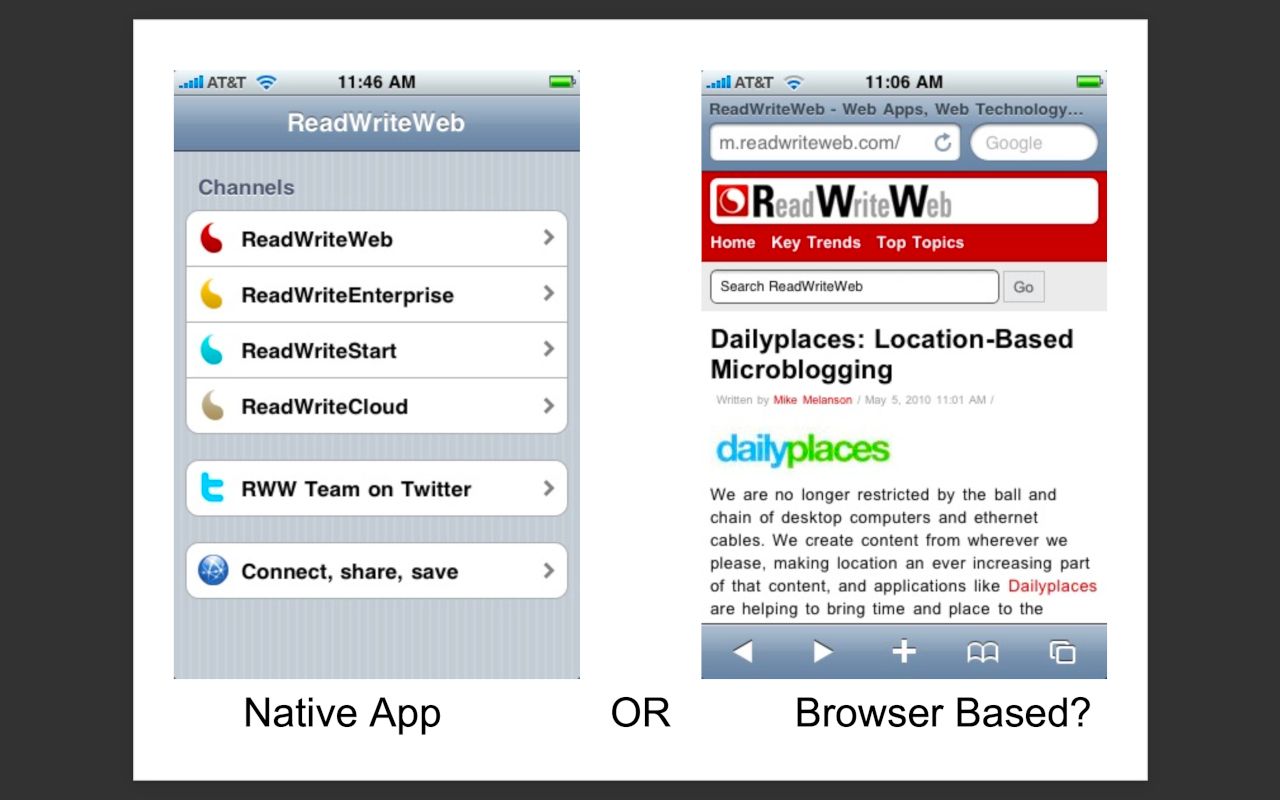
One of the interesting things about that time on the internet was that most people still thought the mobile web—websites optimized for mobile browsers—would ultimately win out over iOS or Android native apps. I cited some statistics showing that there were 185,000 iPhone apps in the App Store and 27,000 apps in the Android store, but 326,000 “mobile touch web sites” worldwide. The trend seemed clear: mobile websites were the future. Facebook certainly believed this, as it was focusing most of its mobile development at this time on HTML5, a mobile-friendly version of the staple web-markup language. Even Apple CEO Steve Jobs was a big proponent of HTML5—the previous month he’d published a now-famous open letter declaring that Apple would stop supporting Flash on its mobile devices going forward and support HTML5 instead. (That letter effectively spelled the end of Flash.)
In my summit presentation, the example I chose to illustrate the benefits of browser-based mobile apps would turn out to be deeply ironic. It was an application called Burbn, which I noted was an “HTML5 location-based social network.” The slide I’d made of Burbn was a last-minute addition to my presentation. Earlier that week, a mutual friend had connected Sean with one of Burbn’s founders, Kevin Systrom. Sean invited Kevin to demo the product at our event, during our “speed-geeking session” after lunch. “I’d love to have you show Burbn off,” Sean wrote, “especially given the number of people who have mentioned they are interested in discussing browser based versus native apps.” Kevin enthusiastically agreed.
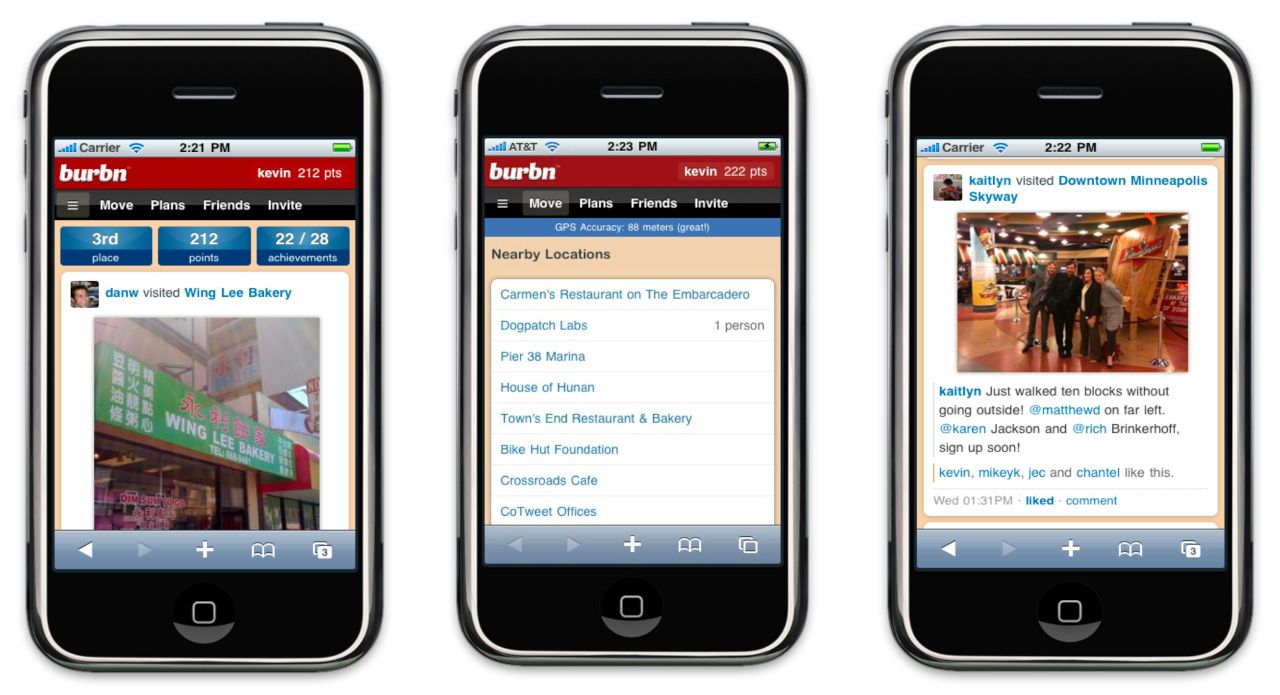
I had joined Burbn that very day, less than forty-eight hours before our event. I befriended a couple of familiar names in the social-web scene, Brady Forrest and Chris Messina, and began poking around. I liked the ability to add a photo to the location you were checking into (this wasn’t possible at the time on the Foursquare iOS app), but otherwise Burbn didn’t seem that remarkable. Still, it was a nice example of an HTML5 application, and so I duly added it to my presentation.
Within five months, Kevin and his partner, Mike Krieger, had turned that minor photo feature into its own product: Instagram. They ended up ditching the HTML5 Burbn product and instead released Instagram as an iOS-only smartphone app. By the end of 2010, Instagram had a million users—it was a textbook example of a well-executed startup pivot.
Needless to say, native apps won out over mobile browser apps.
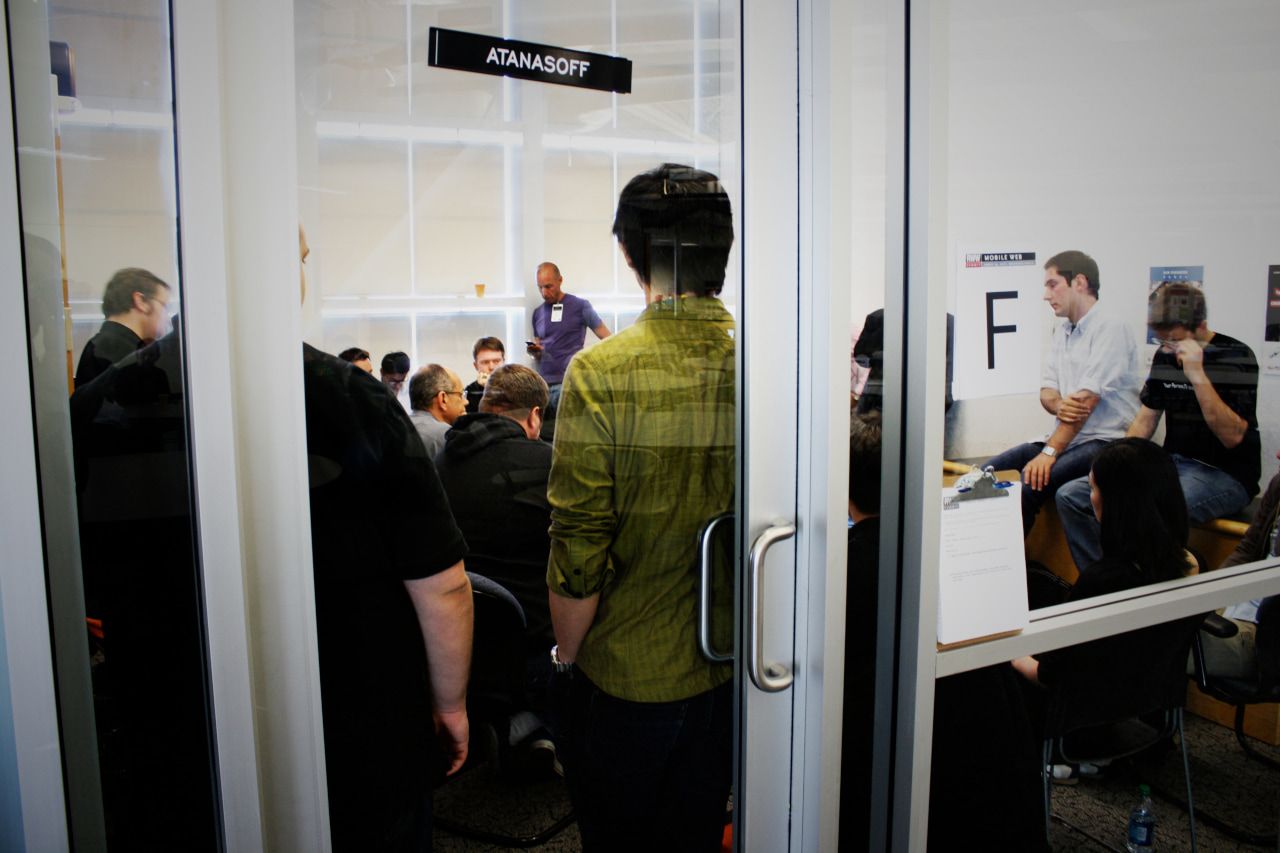
My presentation went smoothly, and indeed, the whole event was a success. I was busy the entire day with people coming up to tell me about their mobile projects, and it seemed like everyone else had been immersed in stimulating conversations too. In addition, we exceeded 100,000 views on Justin.tv, which had livestreamed the event.
It didn’t all go to plan. We felt we were perhaps fifty people short of a full house, there had been some communication issues (I was particularly annoyed by a few glaring typos in the housekeeping email to attendees the night before—“Do not hesitate to come joint us”), and we could’ve done a better job before the event identifying specific experts to invite. These were things to work on before our next unconference, which was set for New York in just five weeks’ time.
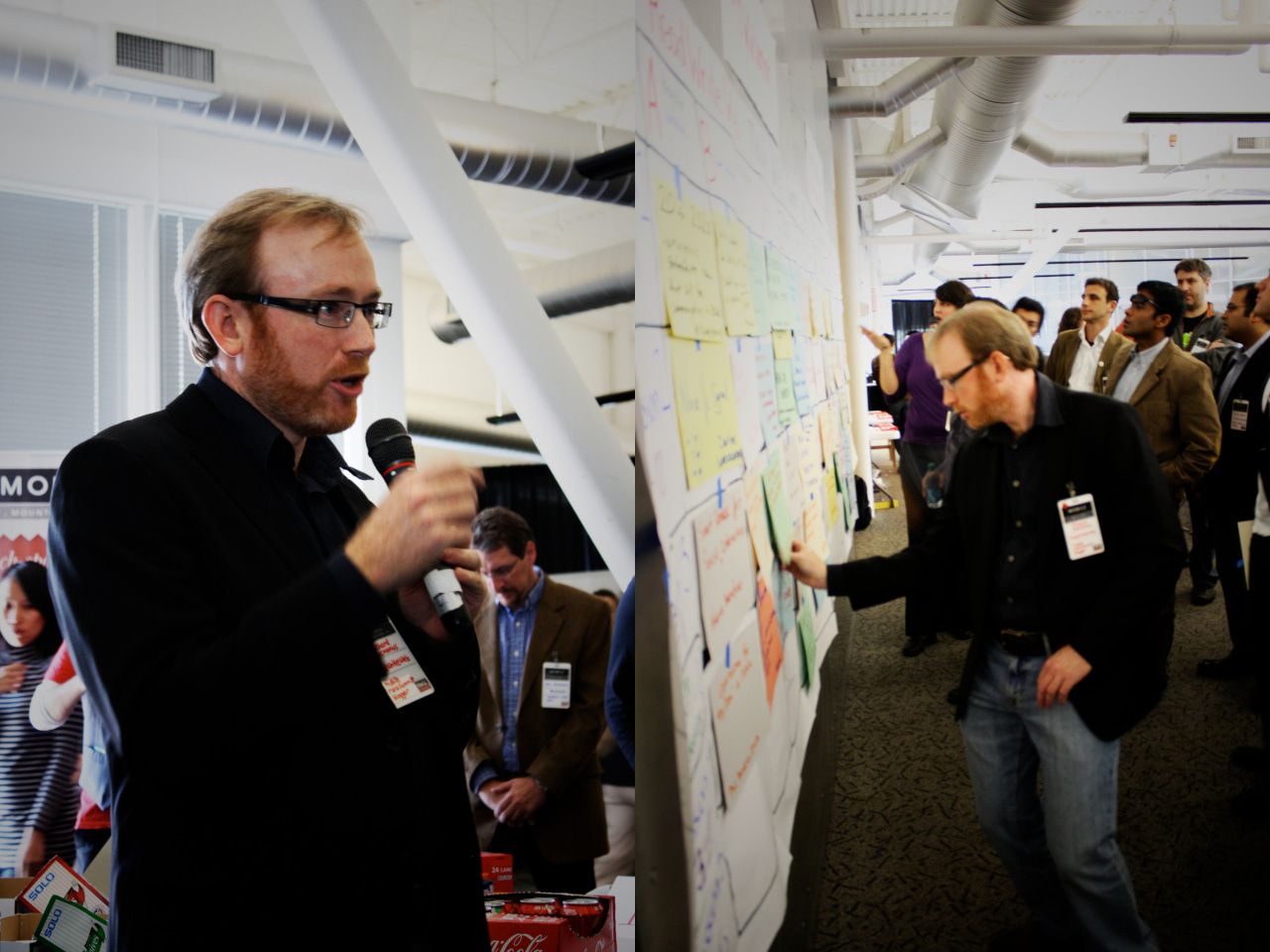
Ideally, we needed a community manager to focus on getting our readers to the NY event, but we hadn’t filled Jolie’s position yet. Elyssa was responsible for marketing, which included our events, and so it was technically part of her purview. Regardless, it was my job to make sure we pulled together as a management team to make New York a success.
This, of course, was complicated by my romantic relationship with Elyssa, which was becoming increasingly frayed. She was back in New Zealand, so we had a Skype conversation on Friday night, after the Mobile Summit and the post-event drinks at the Tied House. It had been a long day and I was exhausted—the call did not end well.
I tried to refocus on business. I had another busy week ahead of me in New York. Sean and I would be scoping out the venue for our June event as well as attending Creative Week, which I knew little about, even though we’d committed to be a media partner.
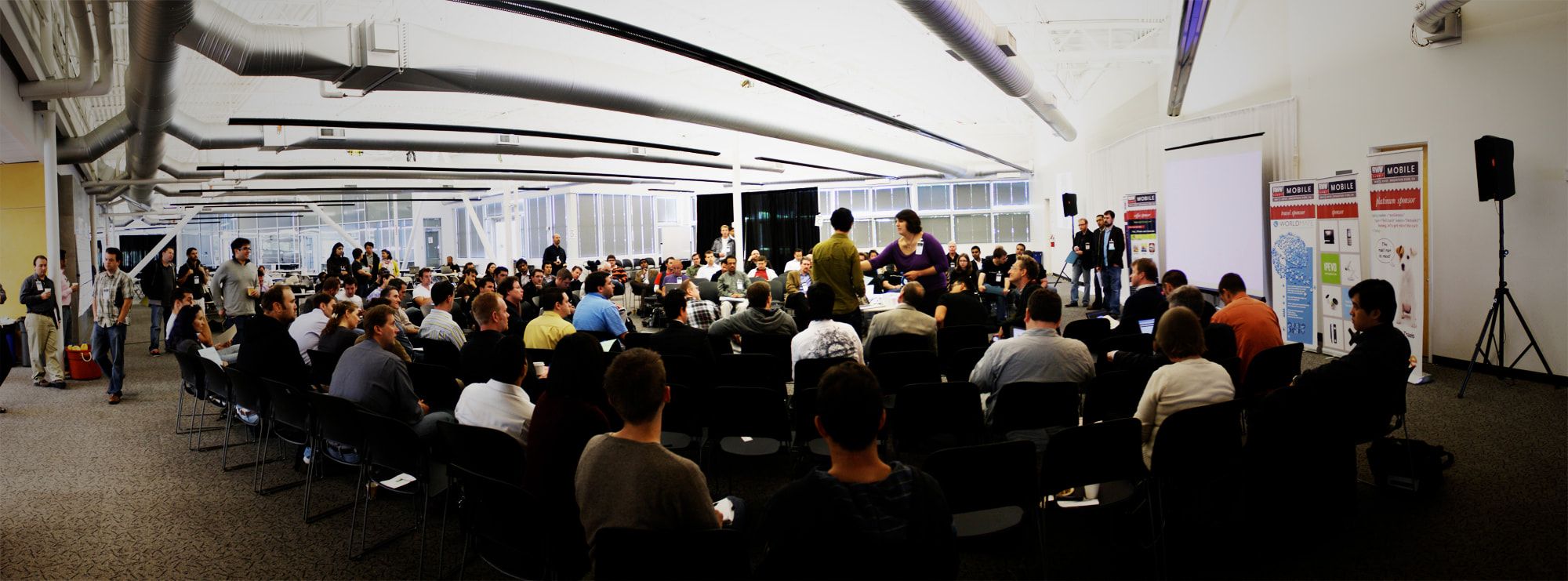
New York and Airbnb in 2010
On Saturday, May 8, I took a midafternoon flight from San Francisco to New York. The flight was due to arrive at JFK near midnight, so I’d booked an airport hotel—thinking I’d make the journey into Manhattan the following morning, when I was more refreshed.
However, my travel got off to a bad start with a delay at SFO. By the time we got to JFK, it was the early hours of Sunday morning. I had to wait around for a while for the hotel shuttle, along with several other travelers—the shuttles didn’t come along as regularly at this hour. Eventually we got to the hotel, only to be told it was full. I protested that I’d booked and prepaid for a room (and it seemed others had done the same), but these pleas fell on deaf ears. I suspected the hotel had sold our rooms again when we hadn’t arrived on time. Perhaps this was just how things were done in New York, but even so, it was a shitty thing for them to do.
We were all told to wait while they tried to find us alternative accommodation. My brain was fried beyond tiredness by this point. We stood to the side with our luggage and glumly watched the person at reception phoning around to other hotels. After a while, we were told to get back on the shuttle again; it deposited us at another faceless airport hotel, and I collapsed into a bed.
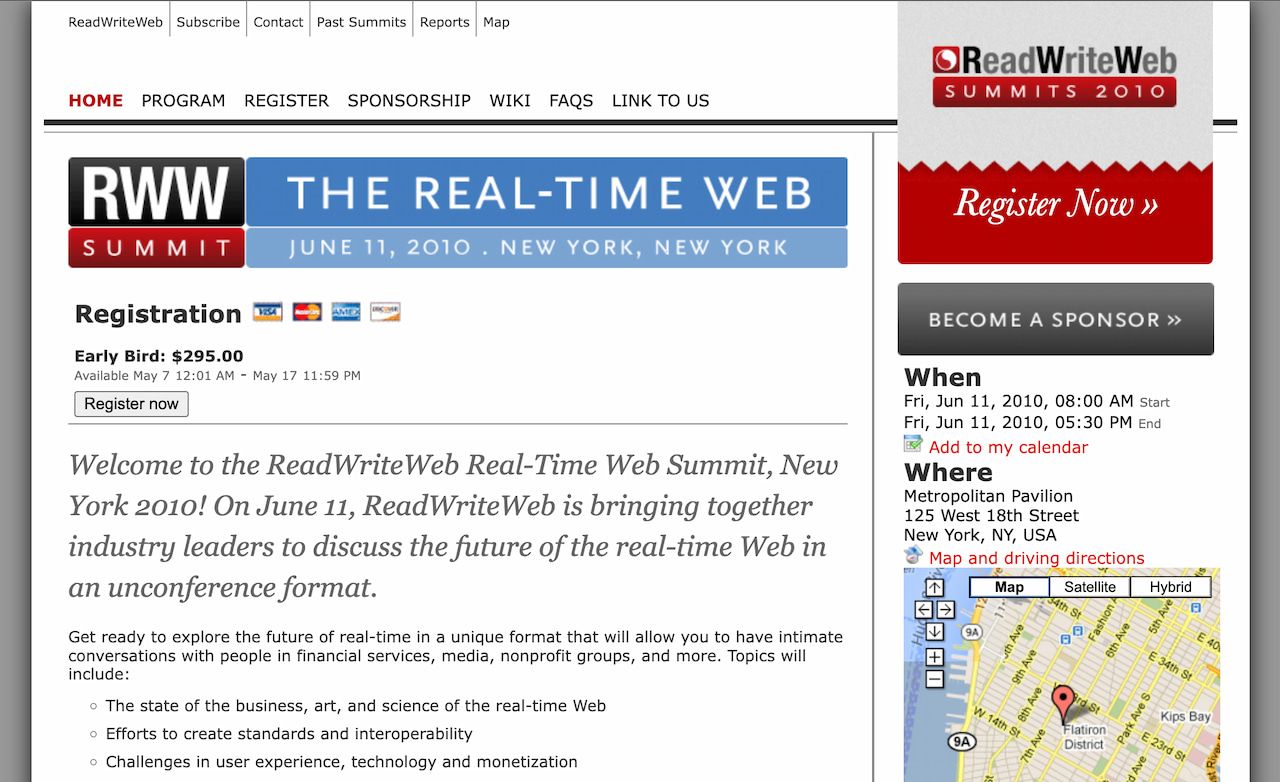
Throughout all of this, I had been messaging Elyssa about my travel woes. It was early evening NZ time, but she hadn’t replied to any of my messages. This wasn’t a good sign, but I didn’t give it any more thought—I was too busy feeling sorry for myself about the hotel debacle.
The next morning, feeling not at all refreshed, I took a Yellow Cab into the suburb of Williamsburg in Brooklyn. Sean had booked an apartment via a new web service I hadn’t yet heard of, Airbnb. We’d be paying $150 per night plus a service fee for a five-night stay, which was a bargain in New York.
The apartment we’d be staying at was one of a number in Brooklyn being advertised on Airbnb under the brand name Hotel Toshi Toshi. After arriving and picking up the key at an office around the corner, I discovered that we’d be staying in an old five-story redbrick building at 188 South Eighth Street. Sean had booked one of the two-bedroom units in the middle of this complex, which turned out to be a serviceable but run-down apartment. Since Sean wasn’t turning up till the following day, I got to choose which bedroom I wanted. I took the one nearest the door and duly unpacked.

I didn’t realize it at the time, but Hotel Toshi Toshi was rather controversial among the residents of Williamsburg—just the week before I arrived, there was a report in Brooklyn Paper (a local media website) with the headline “Neighbors Say Hotel Toshi Is a Horrorshow Hostel.” The article didn’t seem to be about the specific apartment building we were in, but it warned of “transient guests” throwing “rowdy late-night parties.” Questions were also being raised in the media about the legality of the operation, which was a common theme with Airbnb in its early years. I wasn’t aware of any of this, but on the first night I discovered that noise would indeed be a problem for the next five nights. I could hear people coming and going in the building all night, and I got hardly a wink of sleep for the second straight night.
When Sean arrived the next evening and saw my haggard face, he offered to swap rooms—perhaps the room farthest from the door would be slightly quieter, he suggested. But by then I’d worked out that all the walls throughout the apartment were paper-thin, so I doubted that. I told him I’d stick with my current room. “Well at least this place is saving RWW a lot of money,” Sean said, giving me a concerned look. I could see that he was worried he’d let me down by hiring a dubious apartment in Brooklyn, but I assured him that it was fine and we’d survive for the next four nights.
One positive about the location was that it was an easy subway ride from Williamsburg into Manhattan. Over Sunday and Monday, which were days I had mostly to myself, I toured all the main art museums: the Met, MOMA, the Guggenheim. On Monday evening I attended New York University’s annual Interactive Telecommunications Program (ITP) Spring Show. I’m not sure how I’d heard about this, since it wasn’t part of Creative Week, but ITP was a graduate program at NYU and the show was a chance for students to showcase their interactive projects. I saw everything from Matrix-like interactive squiddies to a woman on stilts powered by an iPhone app to a paintbrush that made music.
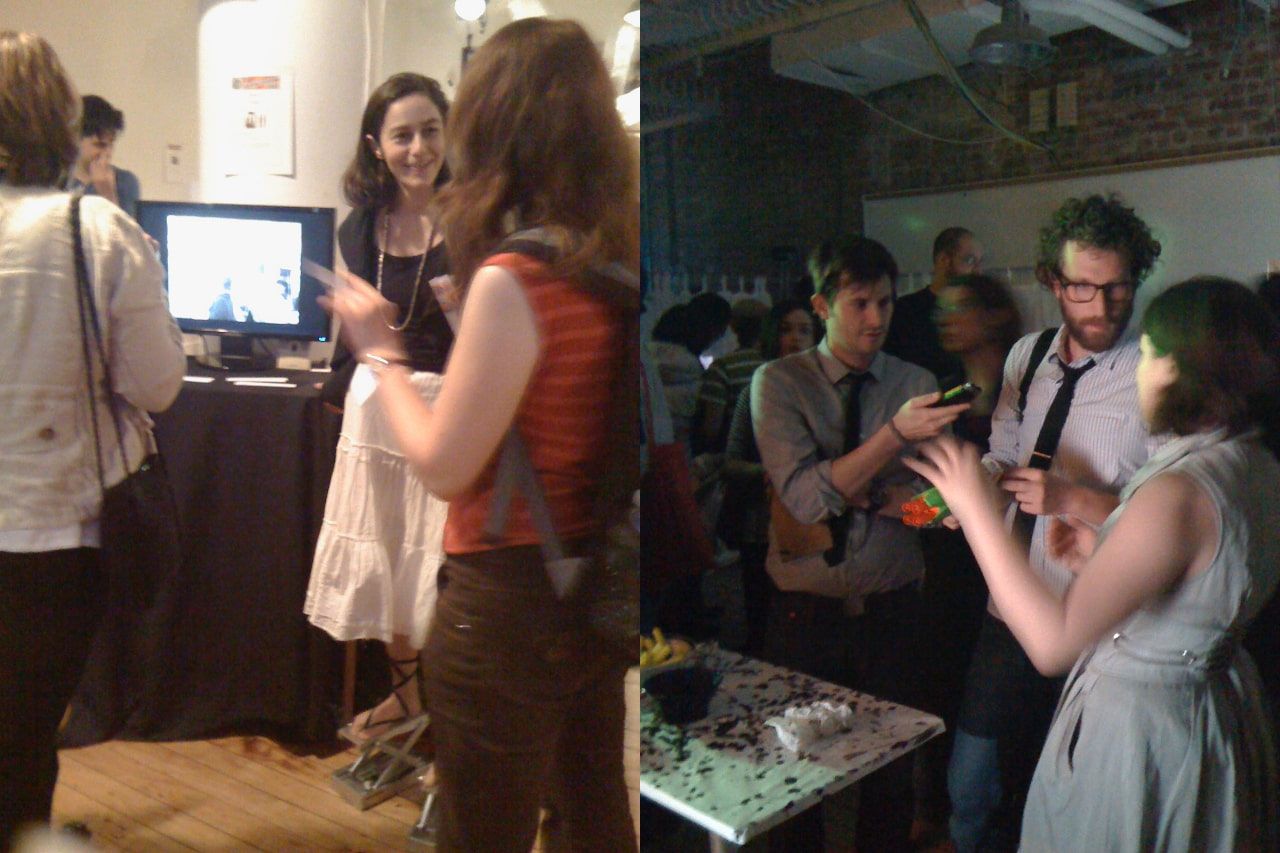
My favorite project of the evening was called Current, which I described in my writeup as “a prototype meme tracker using data visualization.” It was a classic Web 2.0 mashup: the data came from a combination of Google Trends and Google News. The mashup’s creator was a young woman named Zoe Fraade-Blanar, and I invited her to participate in our real-time web event in June—I figured Current would be perfect for the speed-geeking session.
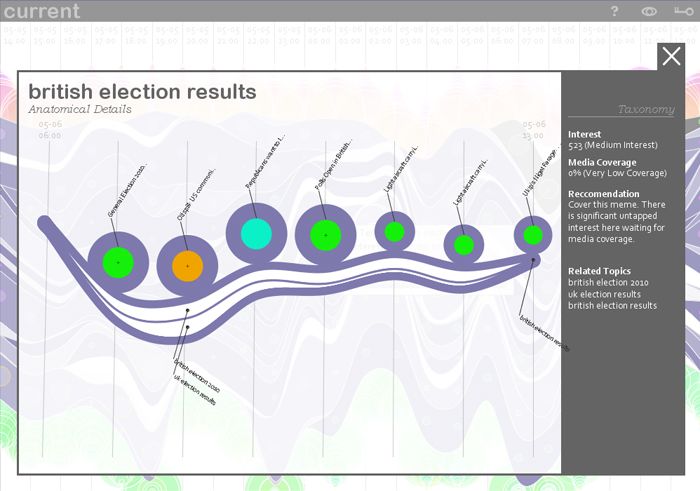
Current was the type of creative technology solution that I hoped to see more of in the wider culture, and that I wanted RWW to advocate for. Its reliance on Google to supply the data wasn’t so much a concern back then. But, in hindsight, it should’ve been.
This post is part of my serialized book, Bubble Blog: From Outsider to Insider in Silicon Valley's Web 2.0 Revolution. View table of contents.
Next up: 050. New York Times HQ Visit and Emergence of Influencer Culture
Buy the Book
My Web 2.0 memoir, Bubble Blog: From Outsider to Insider in Silicon Valley's Web 2.0 Revolution, is now available to purchase:
- Paperback, US$19.99: Amazon; Bookshop.org
- eBook, US$9.99: Amazon Kindle Store; Apple Books; Google Play
Or search for "Bubble Blog MacManus" on your local online bookstore.